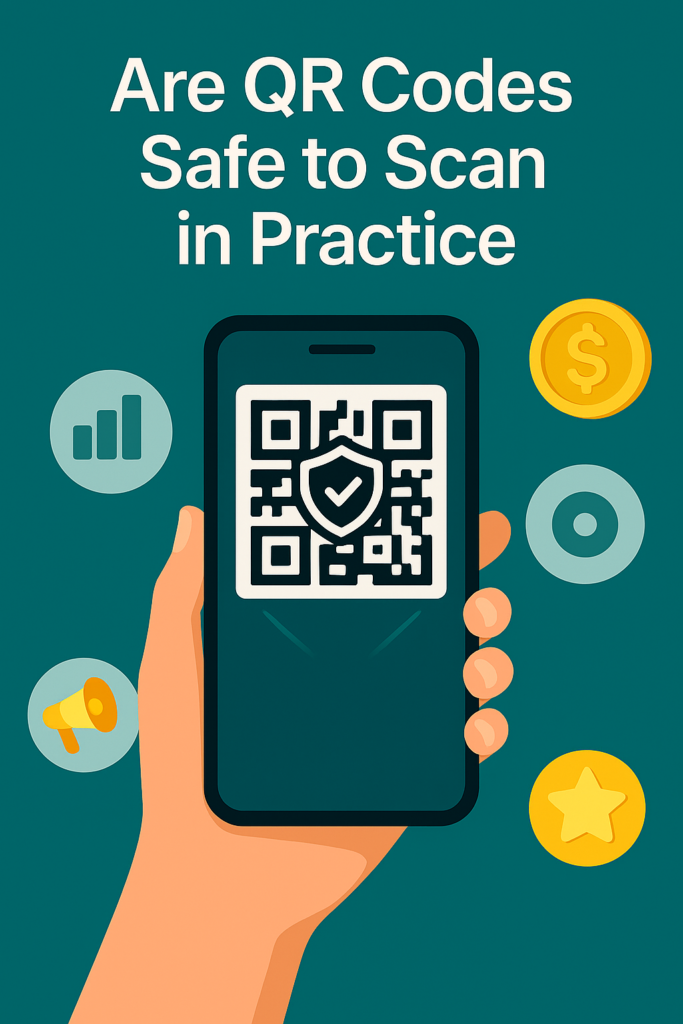The Real Threat: It’s Not the Code, It’s the Destination
QR codes are neutral. They’re just containers that store data. The actual risk lies entirely in where that code directs you and who controls that destination. According to academic research from 2024, QR phishing is rising globally at an alarming rate. In a real-world study conducted at a research campus, cybercriminals designed professionally formatted QR codes offering vouchers and rewards, then tracked who scanned them. The results were sobering: users fell for phishing QR codes at significant rates, particularly those with lower technical expertise. The researchers found that while tech-savvy individuals showed greater awareness of risks, non-technical users were highly vulnerable—and criminals were deliberately making codes more attractive and legitimate-looking to exploit this gap. The mechanics are simple but effective. Attackers embed malicious URLs into QR codes that redirect to:- Phishing sites mimicking legitimate businesses to steal login credentials and payment information.
- Malware downloads disguised as routine app updates or required software.
- Fraudulent payment pages that trick users into sending money directly to scammers.
- Credential harvesting pages collecting personal and financial data.
Why QR Codes Have Become a Phishing Goldmine
Three factors have made QR codes attractive to criminals: 1. Trust through familiarity. After COVID-19 normalized QR usage, people scan without thinking. A code from a restaurant menu seems harmless. Why wouldn’t a code from a flyer be? 2. Anonymity. Unlike a link you can read before clicking, a QR code’s destination is invisible until you scan. Users have no way to verify where it leads before committing. 3. Scale. Printing physical QR codes is cheap. Attackers can target thousands of people by replacing legitimate codes with malicious ones, or distributing codes via email, social media, and physical spaces.The Financial Services Frontline
Financial services have embraced QR codes more aggressively than most industries, and the stakes are highest here. In Brazil, India, and China, QR payments have become central to the payments infrastructure, in some cases rivaling or exceeding card transactions. But this adoption comes with proportional risk. Fraudulent payment QR codes are already documented in the wild, tricking users into transferring funds to scammers. A user sees what appears to be a legitimate payment request, scans the code, and unknowingly sends money to a criminal account instead of the intended merchant. McKinsey’s 2025 Global Payments Report confirms this tension: trust and seamless user experience are decisive factors for digital payment adoption. Yet trust is precisely what QR phishing undermines. Financial institutions and fintechs now emphasize validation frameworks, encrypted systems, and verified merchant authentication as non-negotiable standards.Retail and Marketing: The Weak Link
In retail and marketing, QR codes drive engagement across flyers, menus, packaging, and outdoor advertising. However, this creates vulnerability. A code placed on a physical poster can be covered with a malicious replacement. An email with a QR code can redirect to a fake login page. In Latin America, where QR adoption in retail has grown rapidly, security has become a differentiator. Successful implementations combine strong visual legitimacy (clear branding, security seals, verifiable merchant information) with embedded technical validation. Research shows that when consumers can clearly identify the source and legitimacy of a QR code, trust increases significantly.Gamification: Engagement Without Sacrificing Security
One counterintuitive insight: safe platforms can actually be more engaging than risky ones. Gamified QR systems—where users earn rewards, points, or incentives for scanning—demonstrate that security and engagement aren’t opposing forces. When gamification includes real-time validation before rewards trigger, encrypted data handling, and transparent tracking, users gain both enjoyment and confidence. This approach addresses a key finding from gamification research: loyalty and participation increase when users feel their data and experience are genuinely protected, not just assured to be.Security first, rewards on top
VISU Network was built to reward attention without sacrificing safety — adding validation, encryption and transparent tracking to every scan.How to Scan Responsibly
For consumers:- Verify the source. Is the QR code on official packaging, a trusted website, or a physical location you recognize? Unsolicited codes on stickers, random flyers, or unexpected emails are higher risk.
- Check before proceeding. After scanning, review the URL or destination before entering any information. Does it match the company’s official domain?
- Use secure platforms. When possible, scan QR codes from apps or services known for validation and security, not just any scanner.
- Never enter sensitive information unless you’ve independently verified the destination is legitimate.
- Trust your instincts. If something feels off—odd URL structure, unexpected requests for information, redirects to unusual domains—stop and verify before proceeding.
- Validate authenticity. Implement verification layers so customers know they’re scanning legitimate codes.
- Encrypt redirects. Ensure the destination URL is encrypted and cannot be intercepted or manipulated.
- Use verified merchants. Only provide QR codes from official channels, and clearly brand them with company logos and security indicators.
- Monitor and replace. Regularly check that physical QR codes haven’t been replaced with malicious alternatives.
- Educate users. Help customers understand why they’re scanning and what to expect, reducing the element of surprise that scammers rely on.
The Verdict
QR codes remain one of the most powerful digital connectors available—low cost, highly scalable, and genuinely useful across industries. But like any powerful tool, they require vigilance. The answer to “Are QR Codes Safe to Scan?” is yes—provided that users stay alert and platforms prioritize validation. This means combining user awareness with secure infrastructure: encrypted systems, advertiser verification, transparent transaction logs, and platforms that make safety visible rather than hidden. In 2025 and beyond, the future belongs to QR ecosystems that blend security with seamlessness. The codes themselves are safe. It’s the intentions behind them—and the platforms delivering them—that determine whether your scan is secure or compromised.
FAQ: Are QR Codes Safe to Scan?
Are QR codes themselves dangerous?
No. QR codes are just containers for data, usually a URL. The risk comes from the destination — a malicious website, fake payment page or phishing portal — not from the code format itself.
Can scanning a QR code install malware automatically?
In most cases, simply scanning a QR code opens a link or app and does not install malware by itself. The danger appears when you download unknown files, approve unusual permissions, or install apps from untrusted sources after scanning.
How can I tell if a QR code is safe?
Check the context and destination. Prefer codes from official packaging, signage or websites. After scanning, inspect the URL before tapping: look for HTTPS, correct spelling and the brand’s real domain, and avoid shortened or suspicious links you don’t recognize.
Are QR code payments secure?
QR payments can be very secure when handled by regulated banks, wallets and payment providers that use encryption and merchant verification. The main risk is scanning fake payment codes that redirect money to a scammer instead of the intended business.
What should businesses do to keep their QR codes safe?
Businesses should use secure, encrypted platforms; clearly brand their codes; monitor physical placements to avoid tampering; and educate customers on what to expect when scanning, especially for payments and promotions.

